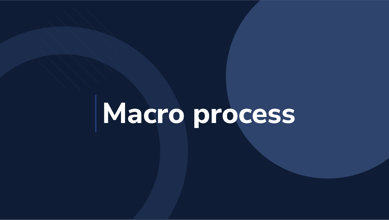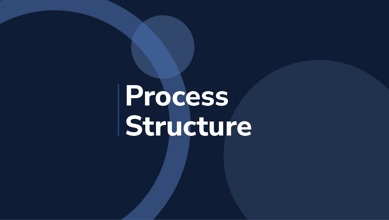Human Resources
Everything you need to know about the Human Resources area of a company.
Introduction
In a company, there are many coexisting functional areas that make business work properly: management, finances, administration, production/operations, quality, marketing, human resources, project management, process, logistics. In order to reach its organizational objectives, it is vital that all these areas have the same purpose and business strategy.
Next, we are going to delve into the Human Resources area: what is it, which are its main functions, its biggest challenges, etc
What will you find on this page?
Definition of the Human Resources area
The Human Resources area can be defined as the area that is exclusively in charge of the staff, their relationships, their problems, their rights, their obligations, and everything else that promotes the recognition of employees as the most important asset for the right functioning of the company; this is why this area is vital for every business that seeks to make the most of its resources. The Human Resource area is a type of process that seeks to organize and maximize the productivity and performance of human capital.
The importance of the area at present has a main role since, even though it is part of the administrative area in general, its field of action and goals are very accurate. Usually, this task is carried out by specialists in the subject and their goal is to encourage the personal development of the staff so the personal interests of each employee are in accordance with the company, producing one shared strategy between the company and the workers.
Organizational Levels: Differences and Functions
Organizational Levels: Differences and FunctionsLeer completo
Delve deeper into our
Business Concepts

Mental health programs: Building healthier workplace environments

What is a macro process?

Process structure
A short history of its development and evolution over time
- Industrial Revolution: the first antecedent for the creation of this area was during the First and Second Industrial Revolutions. They developed in Europe and the USA and introduced the mechanization of processes in order to close the greatest number of sales possible. This brought about some discomfort among workers because there were not good working conditions nor possibilities to grow inside the factories. In order to solve this problem, the "Welfare Department" was created as the antecedent of the HR area.
- First half of the 20th century: From 1910 until 1950, companies started to pay special attention to the workers. The "Staff management" area was created to provide solutions to the workers' problems but it ended up controlling and monitoring employees. It was focused on controlling their schedules, absences, sanctions, and bad habits. Eventually, this would change with the incorporation of new theories such as Maslow's and McGregor's that wanted to humanize the tasks.
- Second half of the 20th century: business managers embraced new staff policies. At this point, Psychology, Sociology and Anthropology became paramount by suggesting that an excellent working environment would result in better sales and products. The HR area as we know it today started to be shaped.
- 21st century: the arrival of the internet, globalization and the first management software tools became important. Technology automates processes and allows workers to focus on specific tasks; the emphasis here is on searching, choosing and hiring the best-qualified workers for that task. Eventually, the tasks of the area started to be defined: accompanying the staff became imperative and their constant training starts to provide great results. Agile, iterative processes together with efficient communication becomes the role model.
At present, artificial intelligence also has an important role when concepts such as Business Intelligence (B.I.) start to work in the HR area. This way, B.I. turns data into information and information into knowledge and constant learning; so, managers who make important decisions can base them on real information free of human errors
Functions of the Human Resources area
-
Functions related to the job: in this section, we can find all the activities related to recruitment, training and evaluation of the staff; therefore, it is in charge of planning a form, defining the profile looked for at the company, describing the available positions for the applicants, recruiting applicants, their training, their insertion in the workplace, etc.Once the tasks are fulfilled, it will also be in charge of suspensions for any cause that could lead to dismissals if tasks are unfulfilled.
-
Functions related to the administration of the staff: even though these tasks are more administrative, the activities this area carries out are the composition and formalization of the contract to be signed, procedures related to social and working insurance, presenteeism control, absences, schedules, and everything else related to the discipline of the worker, other areas management, such as vacation, leaves of absence, overtime, sickness absences, causes for absence, etc.
-
Remuneration functions: also called evaluation and reward functions. They are in charge of studying the performance of employees and if their salaries are in accordance with their tasks. They also study the contingencies that can promote greater development such as diets, trips, days off, rewards, etc. It also deals with promotions and relegations and everything related to the incentive policies each company has.These types of tasks justify the specialization of the area. Its psychological and encouraging nature is the result of scientific academic training and not just mere expectations or decisions taken with no reason. The motivation of its manager is very important at this stage.
-
Functions of problem-solving: also known as labor relations functions. They are in charge of solving the problems that may arise from a working relationship. This specific task aims at paying attention to the complaints of the staff who express their concerns through their representatives; they can be related to raises, discipline policy, working conditions, work time, etc.The main goal of this function is accomplishing a harmonious environment to work. Through negotiations, it tries to balance inequalities that may arise and achieve a nice working environment.
-
Functions of staff service: Even if they are provided by the company or outsourced by external organizations, they are one of the characteristics of the area and its commitment to the staff. Through these functions, the area tries to improve the image that the employee has of the company since they will feel accompanied and pampered by different actions such as: daycare centers, vacation homes at low cost, collective insurance and specialized medical services, sports clubs, leisure centers, reading rooms, scholarships, dining areas, anti-stress services, equipment like computers, tablets, backpacks, etc.
-
Communicative functions: these functions will assure constant feedback between managers and employees. To achieve this, communication both internally (formal and informal) and externally will be organized to spread useful information. Depending on each company, we can name three types of communication: descendant, from managers to workers; horizontal, communication among peers (managers or employees); and ascendent, from employees to managers, especially for recommendations, complaints and concerns.
-
Disciplinary and controlling functions: Even though the activities that are carried out by the HR area are, in general, "positive", it is also in charge of controlling and monitoring the staff. In the same way, an employee is rewarded for working well, someone who is not fulfilling their tasks should be corrected. Through different levels of sanctions, managers will call the employee at fault and will communicate him/her displeasure with his/her performance. Sanctions should be in accordance with the mistake made or offense and, generally, they are progressive. The first time, it will be a verbal or written warning; the second time, it will be a suspension and the last warning will be justified firing when the worker does not change his/her ways. This way, the HR area will sanction him/her and, eventually, will communicate his/her dismissal.
The success of the organization arises as a reflection of the unified effort of each individual
Human resources in organizations
Its tasks within the administrative area
Motivation as its main task
- Basic motivation: encompasses appropriate salary, adequate working hours, good security and hygiene conditions, social insurance, etc.
- Personal motivation: to be in a position in accordance with the abilities of the worker, possibilities to grow inside the company, continuous training, etc.
- Transcendental motivation: focuses on the possible positive effects that will be brought about by the good functioning of the society that we live in, values, cultural factors, life quality, etc.
Delves into the relationship between human resources and business
What do we do in Drew?
We believe that clear processes, supported by the right technology, create an environment where people work happier, and thus make your company more productive.Supplementary material
Resources and editorial content
Practical resources on the main challenges and solutions that every company has.
Human resources sessions
Meetings dedicated to particularize different problems that transit the current organizations.
Conclusion
The modern business model has an area (or at least a manager within the administrative area) that focuses on accompanying the staff, from their recruitment with their contracts and selection to their daily performance and their possible promotion.
%20(1).jpg?width=300&name=wp9131686%20(1)%20(1).jpg)
